Recent Articles
Popular Makes
Body Types
10 Electric Cars with More than a 100-Mile Ranges
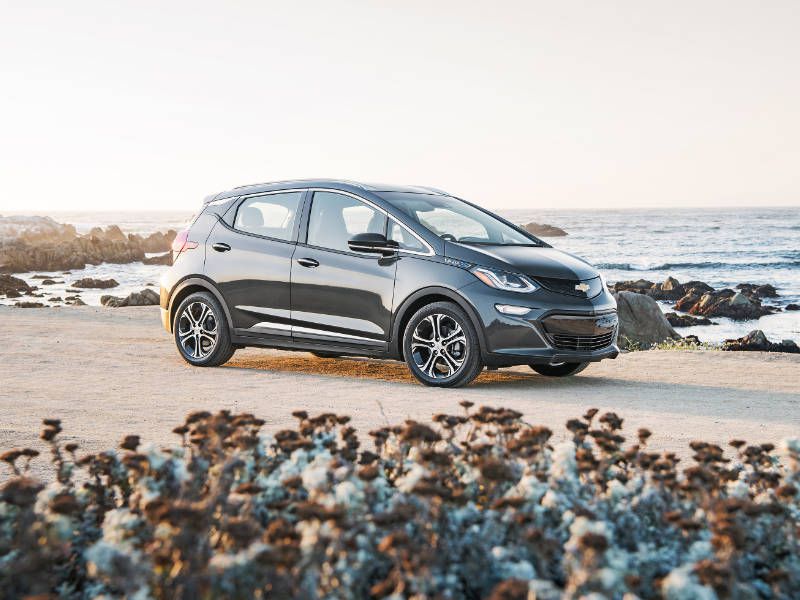
Bolt EV Beach Far Away Three Quarter Front ・ Photo by General Motors
The race to rid the world of range anxiety continues and companies are now offering well over 100-mile ranges on fully electric vehicles. Here are 10 electric cars with ranges of at least 100 miles. So drivers don’t have to turn off the radio and the air conditioning, hoping to conserve every drop of battery energy to make sure they get can home at the tail end of a 100-mile round trip.
You’ll notice a familiar electric-car name crop up a couple of times, but it’s interesting to see how many other manufacturers are getting on board. Some selections are not available throughout the United States, but electric vehicles are proliferating to an ever greater degree. Achieving ranges well into the three figures makes them more viable as a first car, perhaps an only car.
2018 BMW i3 - 114 miles
Even without the optional range extender (basically a BMW motorcycle engine acting as an on-board generator), the i3 qualifies for inclusion here. This is one of the more interesting electric cars. It’s not a battery powered version from BMW’s conventional range, but was conceived from the outset to be an electric vehicle. Its construction is completely different to anything else (except for the i8 plug-in hybrid sports car). It had to be light, so the electric motor and components like suspension parts are bolted to an aluminum tub, while the body (which sits on top) uses a lot of carbon fiber reinforced plastic (CFRP). And although the i3 is technically a subcompact, it’s roomy enough for four adults.

Photo by BMW
2018 Chevrolet Bolt EV - 238 miles
Let’s address the elephant in the garage. The Bolt is pricey, starting at approximately $37,500 before any state or federal incentives that could knock several thousand from the purchase price. And it’s hardly a luxury car, more along the lines of a compact hatchback with a slightly raised ride height (the battery pack is stored in the floor). To sit in, it’s all a bit mainstream Chevy, with the quality of plastics that implies. Nor are the seats particularly comfortable, despite the generous passenger space. But with a large 10.2-inch touchscreen for the infotainment system, 200 hp and Tesla-type range going for it, the Bolt is still a remarkable car. Be sure to select the optional DC fast charging feature.
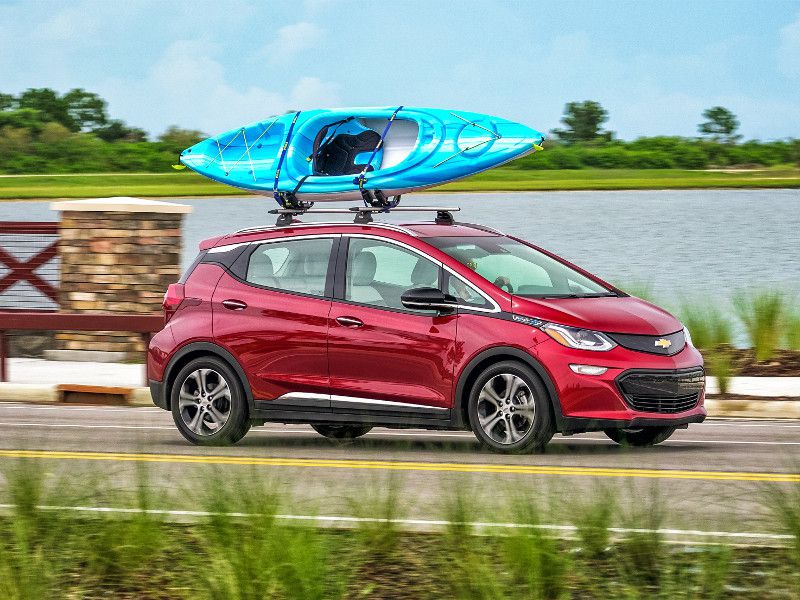
Photo by General Motors
2018 Ford Focus Electric - 115 miles
In the real world, 115 miles might be a bit optimistic, especially because the Focus Electric has a superb front-drive chassis that can easily awaken the enthusiast in all of us — just like its gasoline-powered siblings. So we might be lured into expending more battery energy when the fun factor kicks in. Electric cars are known for being zippy and eagerly responsive to prods of the accelerator pedal. The Focus Electric has a healthy 143 hp to play with. It’s at the other end of the car, the trunk area, where the downsides happen. The battery pack impinges on cargo space and its installation is less than elegant. If Volkswagen and Nissan can solve this issue, so should Ford.
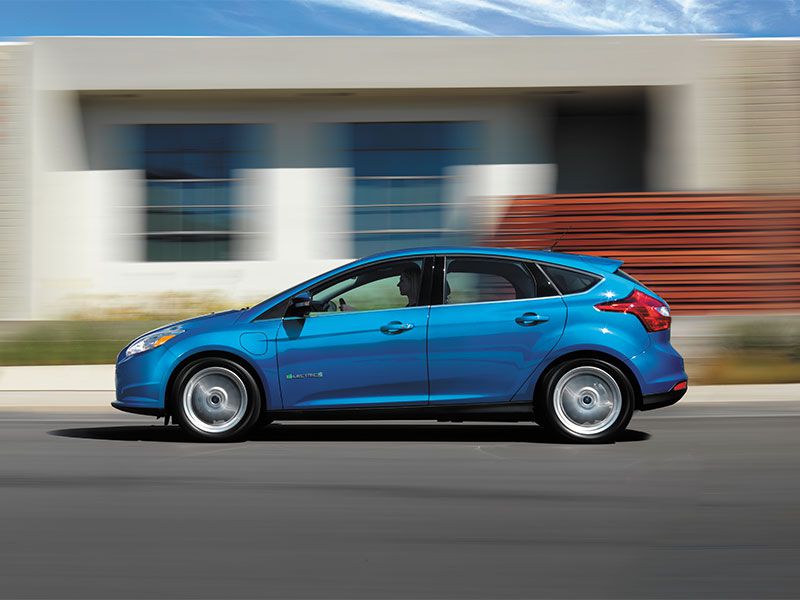
Photo by Ford
2018 Hyundai Ioniq Electric - 124 miles
Only available in California at the moment, this is the battery version that’s part of an Ioniq range that includes a hybrid and a plug-in hybrid. It’s a highly pleasant compact hatchback that rejects the notion of green cars having to look quirky. It’s well equipped, comes with a lifetime warranty for its lithium-ion polymer battery pack, and is priced from just below $30,500 before incentives. Power is somewhat so-so at 118 hp. Like most contemporary electric vehicles, however, it has the ability to replenish up to 80 percent within about half an hour when connected to a DC fast charger. An all-electric version of Hyundai’s new Kona subcompact crossover is also in the pipeline.
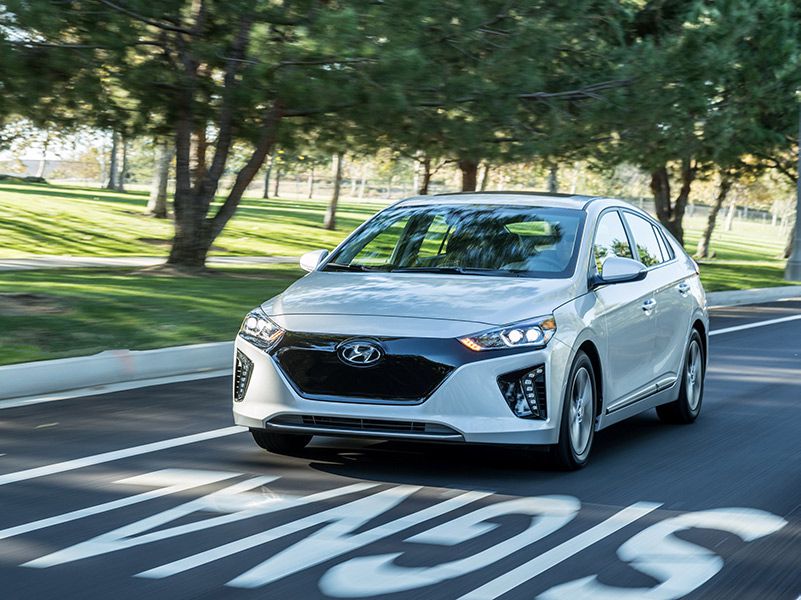
Photo by Hyundai
2019 Jaguar I-Pace - 240 miles
OK, so the I-Pace is perhaps more crossover than conventional car, but this is the first luxury vehicle from a major manufacturer to really go up against the current (pardon the pun) giant of upscale electric vehicles: Tesla. Which makes it well worth including here. The location of the two electric motors and lithium-ion battery, along with the necessity to accommodate humans, dictate the shape of the all-wheel-drive I-Pace to a considerable degree. It doesn’t look like a typical Jaguar, then again, it’s not. It’s a dedicated EV. And it does have the kind of power — 394 hp — to complement the pedigree of the badge. Plus the kind of price, around $70,500 before incentives.
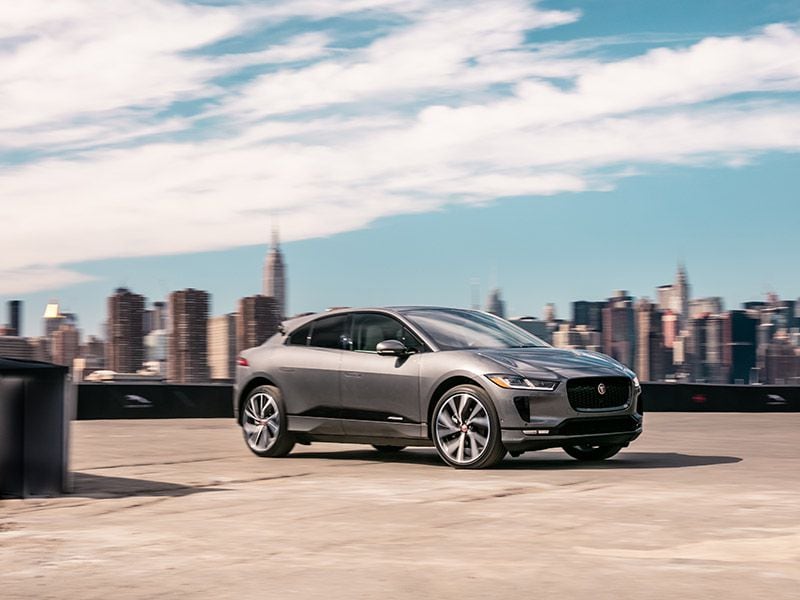
Photo by Jaguar
2018 Kia Soul EV - 111 miles
This model year sees the battery powered version of Kia’s tall and offbeat Soul compact hatchback break the 100-mile barrier. But only just. As such, it still makes more sense as a second or third car rather than a sole means of personal transportation. Which describes a lot of electric cars right now. Even so, the Soul EV has a certain charm, a lot of practicality and plenty of passenger headroom. The electric motor develops 109 hp, which might be described as “modest” if one was being kind. In several ways, though, the Soul EV is part of a wave that has come and is going — ready to be replaced by more modern, more capable electric cars.

Photo by Kia
2018 Nissan Leaf - 150 miles
The fact that the Leaf is now in its second generation while other companies are bringing out their first electric vehicles shows how ahead of the curve Nissan was. The 2018 Leaf is all-new for this model year, starts just below $31,000 (before any incentives), comes with forward collision mitigation as standard, 147 hp, and an arguably more pleasing design. The new Leaf compact hatchback is better than its predecessor in virtually every way. Drivers a little far from home but with access to the right charger can add 88 miles-worth of range in 30 minutes. The overall package of accommodation, equipment and range for this price should tempt a lot more people to dip their toes into the electric pool.
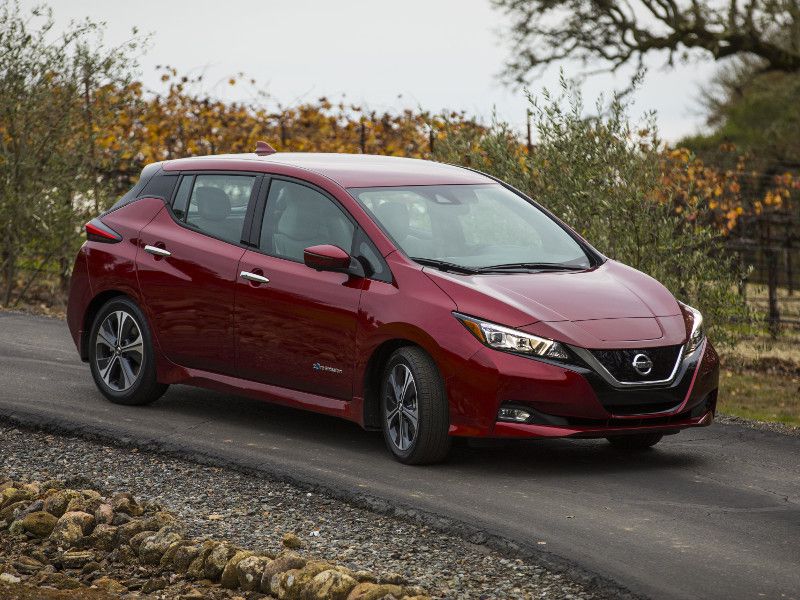
Photo by Nissan
2018 Tesla Model 3 - 220 miles
This is the newest Tesla, a premium compact sedan with a tempting base price of around $36,000. And that range of 220 miles is using the regular battery; Tesla offers a longer-range battery to cover 310 miles. The styling is in the same vein as the larger and wildly successful (in California, at least) Model S. And there are similar features like a large touchscreen, over-the-air updates and superb acceleration. This is all great in theory, but the practice hasn’t been so straightforward. The company is having production problems because demand has been so high. Trouble is, by the time the Model 3 becomes more widely available, there might be more rivals on the market.
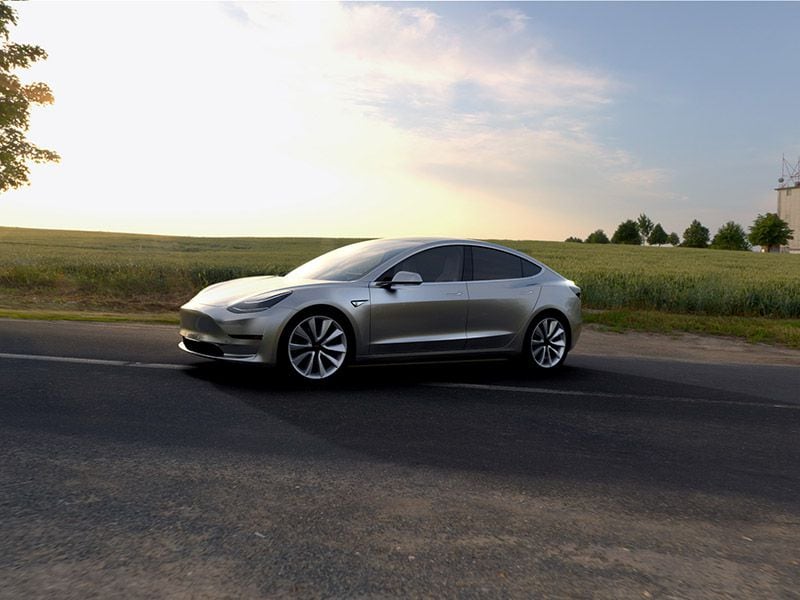
Photo by Tesla
2018 Tesla Model S - 249 miles
The most recognizable electric car. In its most basic form, the 75D — which isn’t so basic at all, since this is an expensive and classy conveyance — has a range of 259 miles. The 100D is capable of 335 miles. No other company has managed to get close to that figure in a production version. For the buyer who wants zero range anxiety to go with zero emissions, this is the choice. Both versions have all-wheel drive as standard, with prices for the 75D starting at around $74,500 before any incentives. We’re looking at $94,000 (pre-incentives) for the 100D. Here’s another incentive, every Model S comes with free use of Tesla’s extensive supercharger network (for now).

Photo by Tesla
2018 Volkswagen e-Golf - 125 miles
The e-Golf had an update for the previous model year which brought it above the 100-mile threshold. One of the great things about this car is that it’s a true Golf, with the same high-quality cabin materials, refined ride and common-sense ergonomics as the conventional version, while retaining the same class-leading maximum cargo space of 52.7 cubic feet when the rear seats are folded down. There are no compromises regarding the location of the lithium-ion battery pack (it’s under the floor). The e-Golf enjoys 134 hp and starts at roughly $31,500. The biggest drawback is availability. It’s only on sale in a few states and the wait times have been long.

Photo by Volkswagen